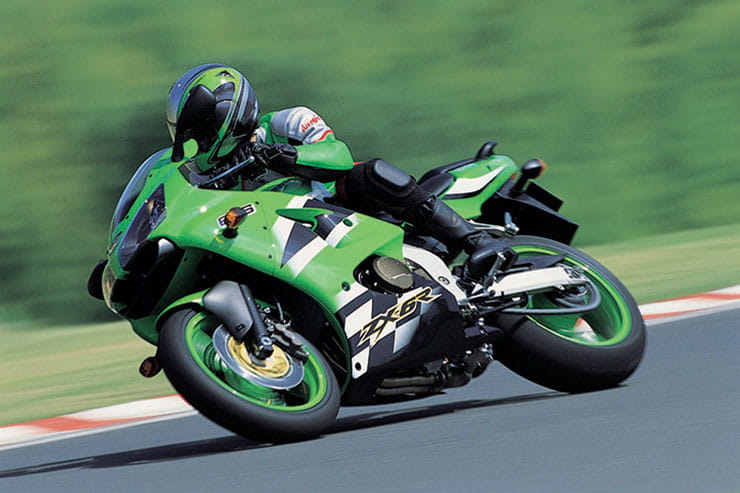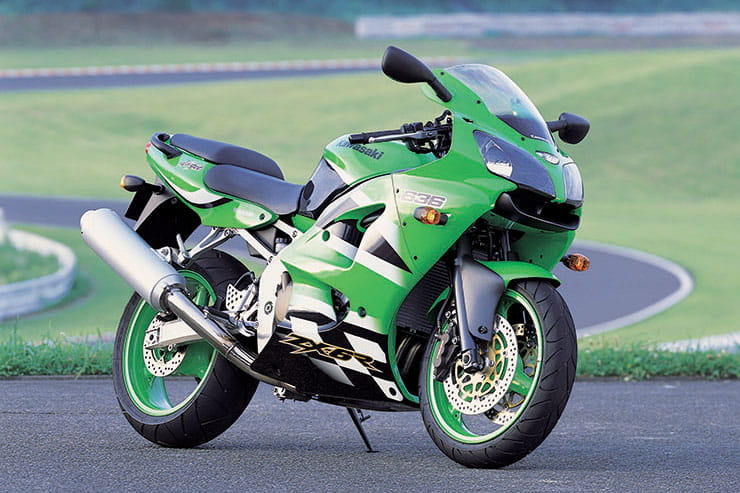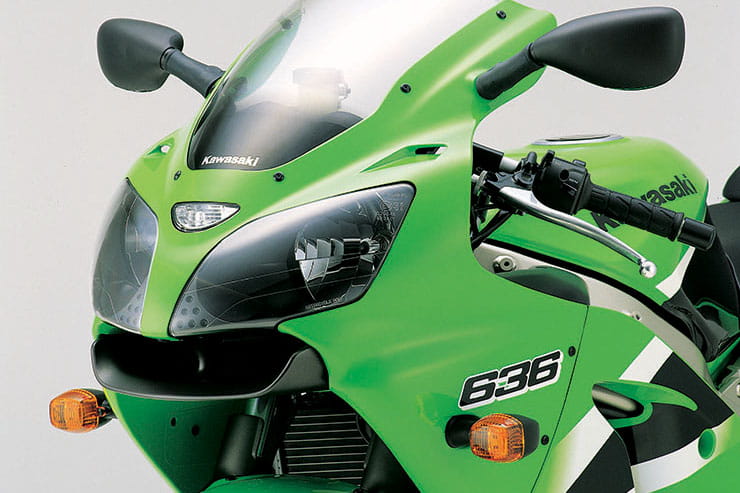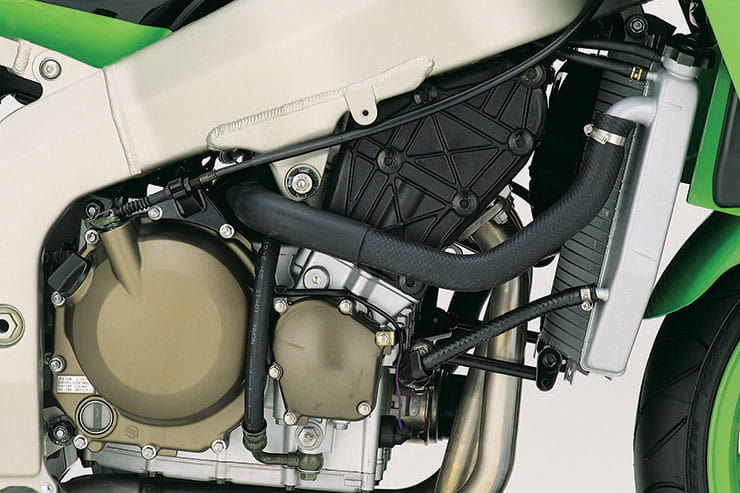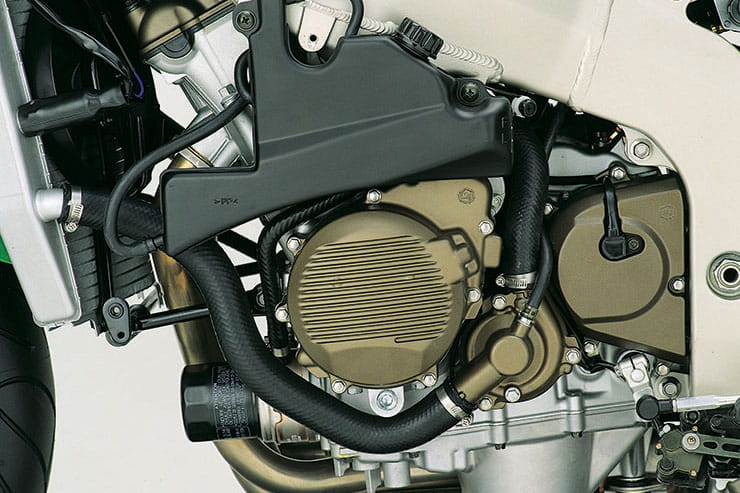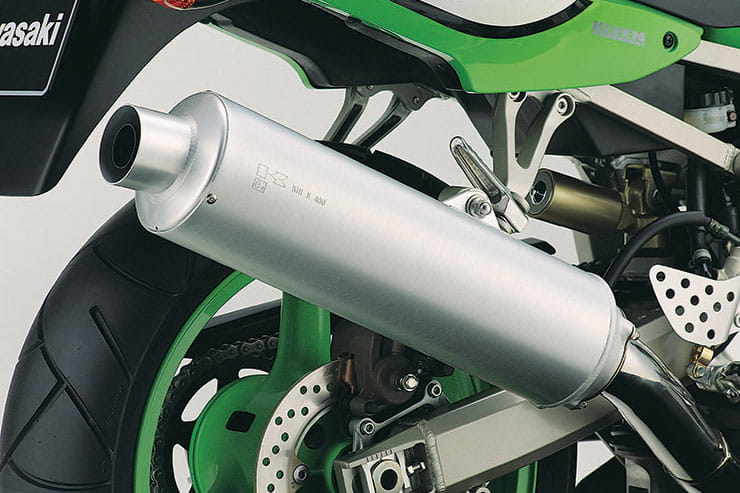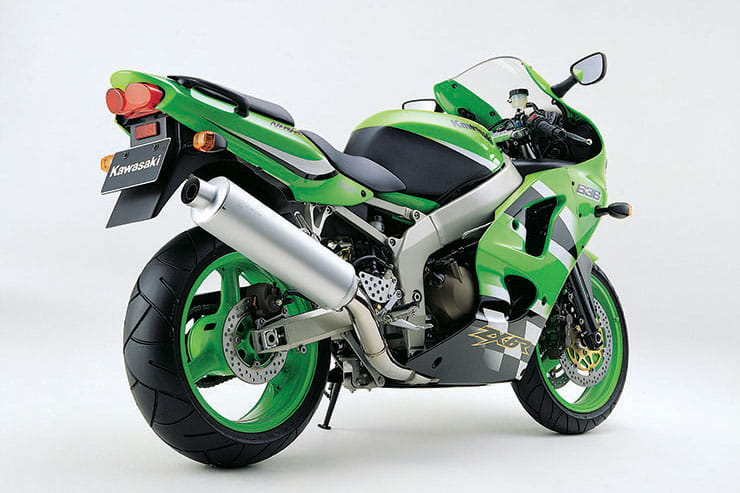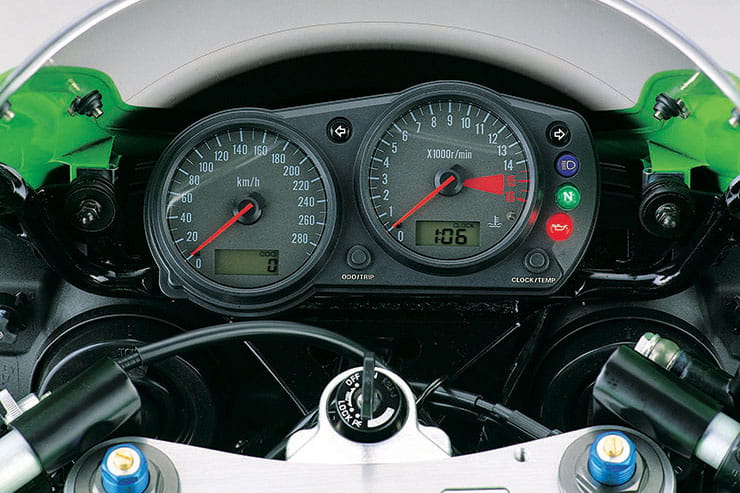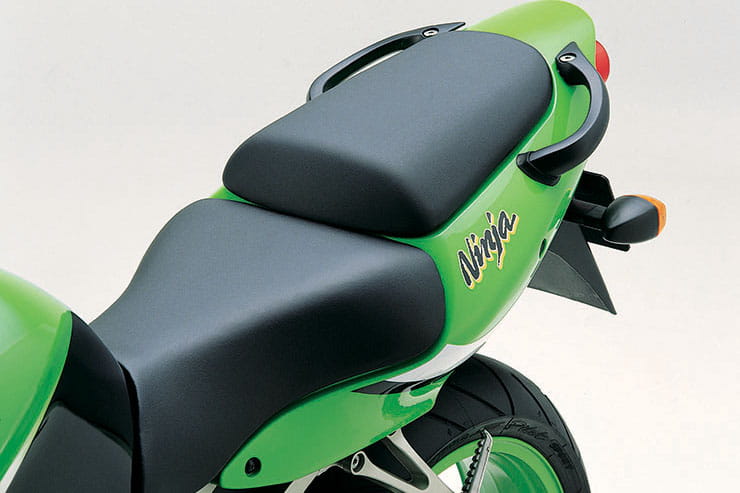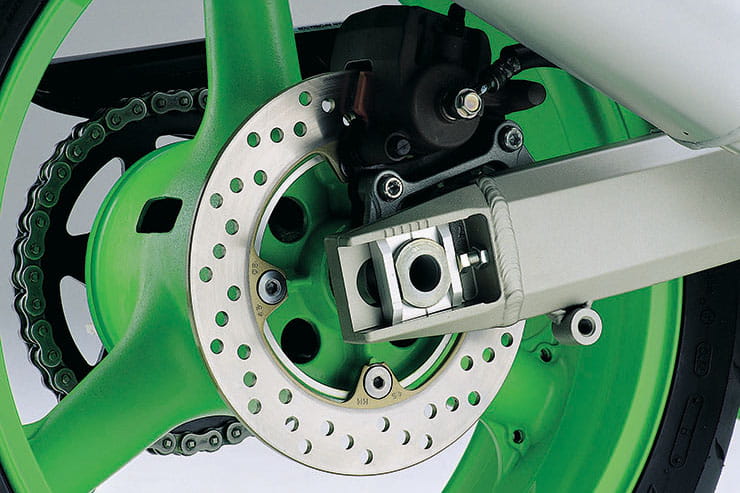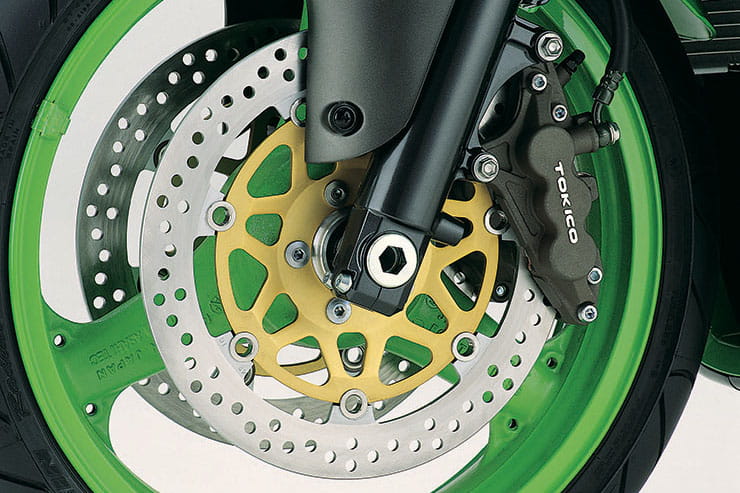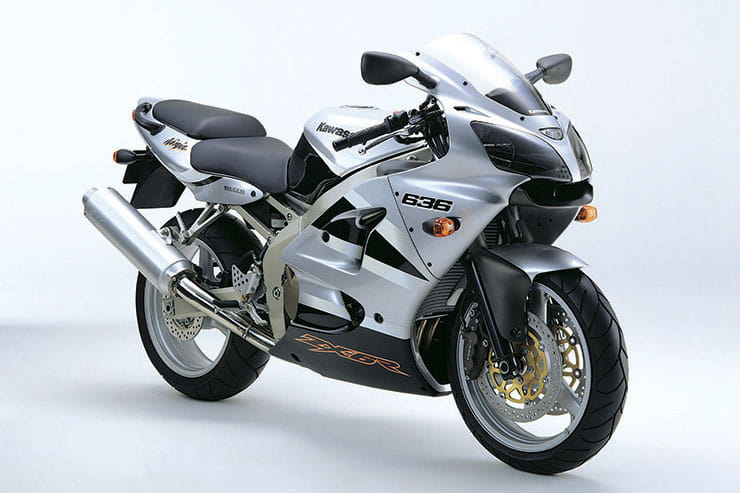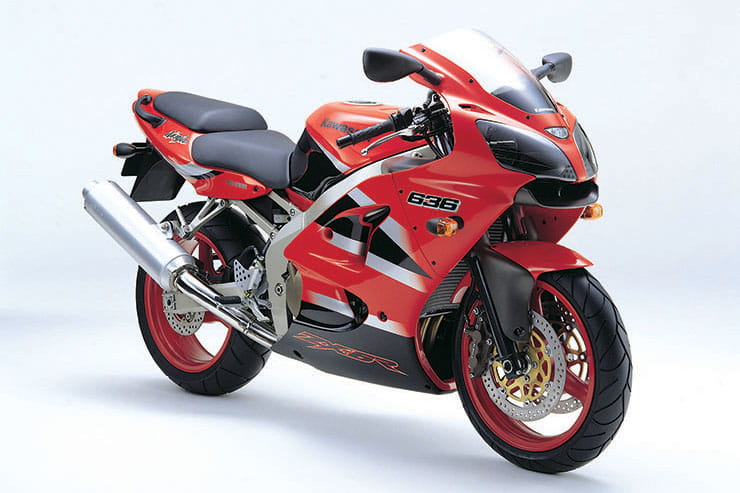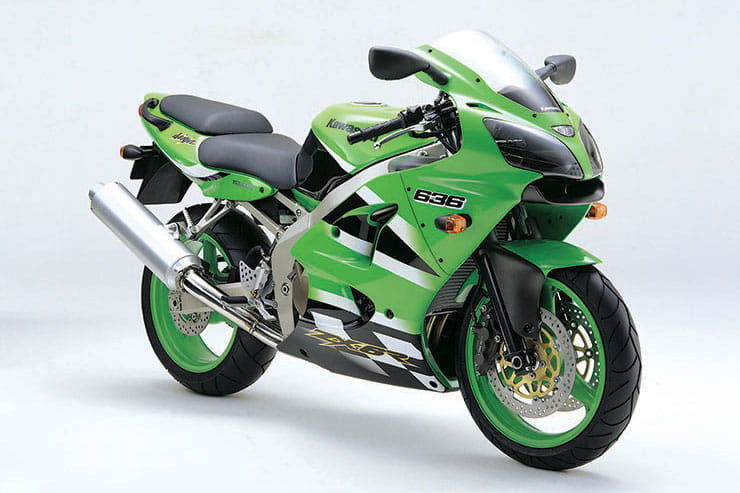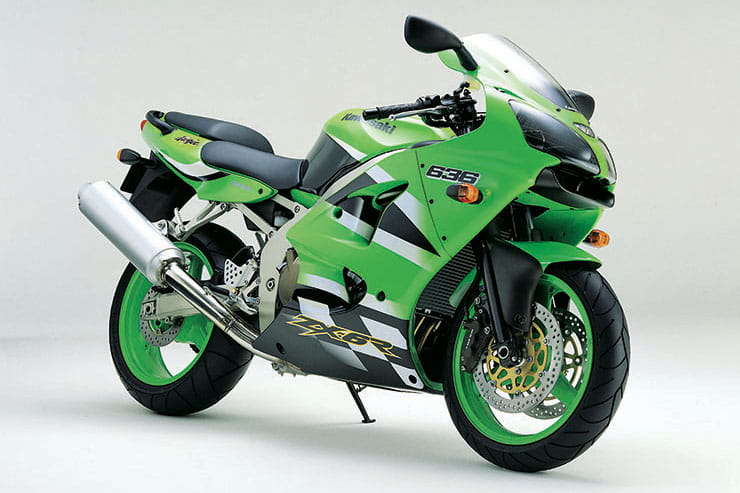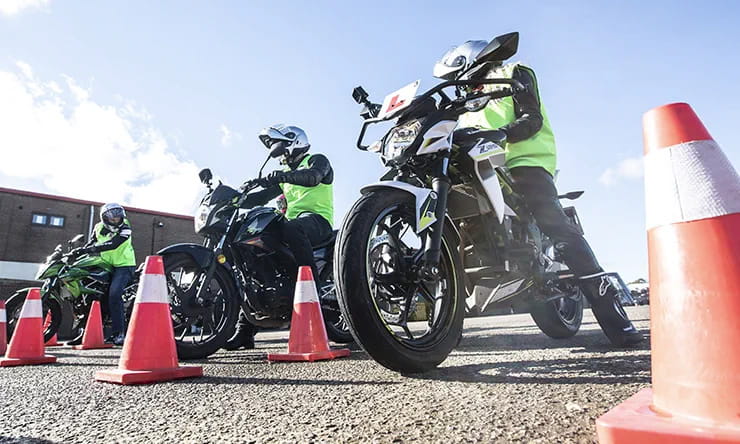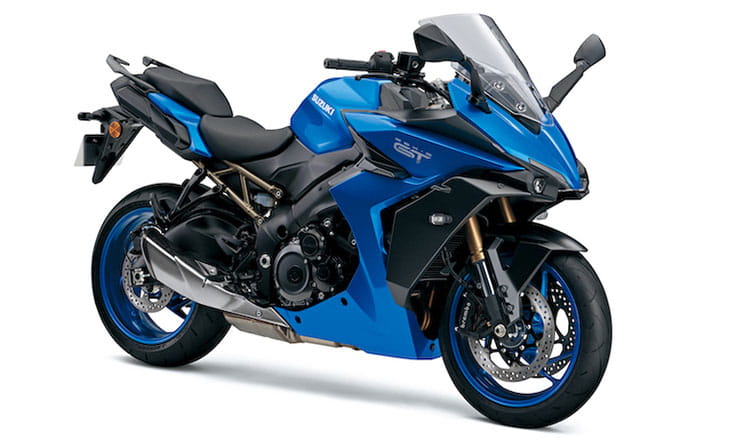The early 2000s was not a great time for Kawasaki in terms of its sportsbikes. The ancient Ninja ZX-9R was getting its backside handed to it by the R1, GSX-R1000 and FireBlade and although the supersport class was yet to really ignite, the Ninja ZX-6R wasn’t doing too well either in the showrooms. But change was afoot (just look at the 2003 Ninja ZX-6R for proof) and the good ship Kawasaki was about to radically alter its direction – the issue was that this new breed of green bikes were still a little way off. In 2000 Kawasaki did a bit of redesigning to the Ninja ZX-6R but in 2002 they went a step further – in more ways than one. The first Ninja model to break the traditional 599cc class limit, the 2002 Ninja ZX-6R was very much a stop-gap model. Little more than a 2000-2001 generation with a bigger capacity and small chassis refinements, the 2002 bike prepared the world for the all-new 2003 machine, which was also a 636cc capacity. So where does this all leave the 2002 Ninja ZX-6R? Surprisingly, it is actually a great used machine as it has bags of poke, a solid engine and an old-school, and therefore roomy, riding position. And the price tag isn’t bad at all.
Kawasaki ZX-6R (2002) Price
The 2002 Ninja cost £6695 in 2002, which was about average for a 600 as it was before they got all tech-heavy and the price tags shot up accordingly. Far from rare, the 2002 ZX-6R is quite an easy bike to locate in the used market, leaving you with two options when it comes to buying. If you want a bit of security, a dealer will charge between £2500 and £3500 for one, which is quite a lot of cash but not astronomical. At the lower end of this range you have to expect a bike that has crossed over 20,000 miles with the top end a bike closer to 10,000 miles. Dip into the private sales and a tatty one can be located for a touch under £2000, so you will save about £500-700 if you opt to go private, which is quite a big percentage of the overall price tag so well worth considering.
Power and torque
With a claimed 113bhp, the Ninja is quite down on the 120bhp-area claims that the next generation of supersport bikes boasted, however that’s not the whole story. Thanks to its larger capacity motor, the Ninja comes with 50.7lb-ft of torque, which is noticeably more than its both future and current rev-happy rivals claimed. Much like the equally old-school-feeling Honda CBR600F, this extra poke makes the Ninja a very pleasant road bike as there is little need to hammer the rev limit. You can happily leave the Ninja in a high gear and allow its mid-range to pull it along rather than be forced to downshift to search out this grunt via higher revs. As a road bike, this characteristic is spot on and it makes the Ninja a flexible, enjoyable and also fairly relaxed supersport bike. That said, if you do feel the urge to rev it hard, the Ninja responds in a typical Kawasaki way – through a wailing airbox and impressive pick-up of speed!
Engine, gearbox and exhaust
The engine on the 2002 Ninja is basically the same as the 2000-2001 model and also pretty similar to the 2003-2004 bike and owners report it is a very solid unit. If you are interested, compared to its predecessor, the 2002 bike gained a 2mm bigger bore thanks to its aluminium cylinders having enough meat on them to allow for the expansion. Kawasaki did claim there were 40 engine updates on the 2002 bike but you would be hard pushed to spot them! Mechanically very robust, you are highly unlikely to buy a bike that is going to do anything drastic such as drop a valve (unless it has been used as a trackday hack...) but there are a few areas to be wary of. The gearbox is pretty solid but higher mileage machines can develop issues so check all is nice and slick on a test ride and also be wary of the throttle response. The Ninja has not only a fuel tap (yes, remember them?) but also four carbs that come with a K-TRIC throttle position sensor on them. If a bike is left standing or just has got a bit old the fuel tap’s filters can become clogged up and the tap’s rubber seals start to perish. A new set of seals is only £15, so a quick rebuild and clean-up (give the tank a wash out to remove any debris) is thoroughly recommended. And while you are there, check the fuel lines as they can start to crack with time. When it comes to the carbs, older bikes seldom get treated to a nice carb balance so if the bike is quite lumpy on tickover, assume this will be required but also consider a strip and rebuild of the carbs themselves, which will cost about £30 for a rebuild kit plus the time for it to be fitted unless you fancy doing it yourself, which isn’t hard. The K-TRIC throttle position sensor generally doesn’t fail but if it does, a replacement is about £50-100 and will require setting up. Finally, look at when the engine was last serviced as the 16,000-mile valve clearance check will almost certainly have been skipped! Onto the rest of the motor and after checking the radiator for leaks or excessive corrosion, look at the exhaust system. The downpipe is nicely unrestricted but there is a catalytic converter just before the exhaust end can, which does restrict power and is easy to remove. A lot of bikes have aftermarket pipes fitted, which is to be expected, but the OE can is quite good to have on as it is made from stainless steel and therefore won’t rot. Ideally any bike with an aftermarket can should have been on a dyno to get its carbs tweaked to suit, but the reality is that this won’t have happened so don’t be too worried if it is still on its OE carb settings. And check it is a 636 and not a 2000-2001 599cc ZX-6R as quite a few 599cc models were registered on a later 2002 registration plate – the 636 logo is on the fairing if you are unsure!
Kawasaki ZX-6R (2002) Economy
As there is less need to rev the 2002 Ninja hard, economy figures are quite good. You can expect to see about 41mpg, giving you a tank range of over 160 miles. And, best of all, when it does start to stutter, you always have a reserve on the fuel tap! Provided the seals haven’t gone and it is leaking through the reserve tap anyway...
Handling, suspension, chassis and weight
The 2002 Ninja is 21 years old now, so take for granted items such as the fork seals, the shock and the suspension linkages will require a good check alongside the wheel and head bearings. Spend a proper amount of time assessing these as while none are that tricky to sort, a fork rebuild is about £200, a new shock £400 and bearings swap about £150 – all costs that make a cheap used bike suddenly become quite pricey. The OE shock has a threaded collar on its top to allow for adjustment to the rear ride height, check it hasn’t been messed around with (look in the owner’s manual for OE settings) as a few owners decided to jack the back end right up and also ensure the compression and rebound adjusters on the shock turn easily and aren’t seized up. If all is well then you will be delighted to discover that the Ninja makes for a very good road supersport bike. In 2001 Andrew Pitt took the World Supersport title on the Ninja and that confirms the fact that the Kawasaki certainly has a chassis that can cut the mustard (provided the suspension, bearings etc aren’t worn...) and that’s how it feels. Although not as razor-sharp as the 2003 Ninja, the 2002 model is light, agile and also far more stable than the radical 2003 model, which is what you want on a road bike. Tipping the scales at a claimed 174kg, realistically this is closer to 200kg fully-fuelled bit that isn’t too heavy and a fairly low 820mm seat height means that your feet are close to the floor, which is always reassuring. Overall, it makes for a cracking road supersport bike that is also fairly happy on track. And don’t worry about the 120/65 front tyre size, a 120/70 doesn’t mess up its handling, and modern rubber also caters for 180/55 rears as it is a very common size so this isn’t a concern.
Kawasaki ZX-6R (2002) Brakes
The Ninja may come with impressive-looking six-piston calipers but they are a real weak point on the bike. Very poor performing even when new, twenty one years later they are even worse. Owners report that they need to be stripped and cleaned regularly to prevent them seizing pistons and even then ideally you need a set of braided lines to give them a reasonable amount of bite. Get them serviced by a professional if you aren’t confident doing it yourself and then keep on top of the cleaning. Give the discs a good check for any warps or signs of them approaching the minimum thickness level (assume 1.5-2mm, check in the owner’s manual to be certain) as new discs are quite pricey at about £250 for a pattern set.
Comfort over distance and touring
Unlike the modern breed of supersport bike (well, before they all died off...) you can certainly tour on a 2002 Ninja, although ideally it is a solo touring bike. The pillion seat has lots of room for throw-over panniers (and no underseat exhaust to get in the way) and the 18-litre tank has a good range. In terms of comfort a taller screen helps matters but the Ninja is far from an uncomfortable bike for covering distance on.
Rider aids and extra equipment / accessories
The Ninja has no rider assists at all, not even a gear indicator – well, what do you expect from a bike that has a fuel tap and carbs? In terms of accessories, you are realistically looking at a taller screen, crash protection, replacement can, tail tidy and maybe items such as heated grips if the bike has been used as a commuter. A lot of Ninjas remain pretty standard aside from these items so if there is a lot of bling attached, or an aftermarket fairing, assume it was used as a trackday bike and avoid. Be wary of hacked looms with mini indicators etc fitted.
Kawasaki ZX-6R (2002) verdict
There is a lot to like about the 2002 Ninja ZX-6R and not much to worry about when buying used. Solid, reliable and very old-school in its attitude, this supersport bike makes for a great day-to-day machine that has a welcome boost of mid-range and also a bit of a sting in its tail when the sun is out and you feel in the mood. At £2500 it is well worth considering as its main rival, the excellent CBR600F, lacks that welcome little spark of Ninja attitude that ensures you have a smile on your face whenever you park it up after a ride.
Three things we love about the ZX-6R…
- Solid reliability
- Roomy riding position
- Decent mid-range for a 600
Three things that we don’t…
- They can look shabby quite quickly
- Visually it is quite old-hat
- The finish is left lacking in some areas
Kawasaki ZX-6R (2002) spec
|
Original price
|
£6695
|
|
Current price range
|
£2000-£3500
|
|
Capacity
|
636cc
|
|
Bore x Stroke
|
68x43.8mm
|
|
Engine layout
|
Inline four
|
|
Engine details
|
DOHC, 16v, liquid-cooled
|
|
Power
|
113bhp (84kW) @ 12,500rpm
|
|
Torque
|
50.7 lb-ft (68.8Nm) @ 12,000rpm
|
|
Top speed
|
160mph
|
|
Transmission
|
6 speed, chain final drive
|
|
Average fuel consumption
|
41mpg
|
|
Tank size
|
18 litres
|
|
Max range to empty (theoretical)
|
160 miles
|
|
Reserve capacity
|
28 miles
|
|
Rider aids
|
None
|
|
Frame
|
Aluminium beam
|
|
Front suspension
|
46mm inverted forks
|
|
Front suspension adjustment
|
Fully adjustable
|
|
Rear suspension
|
Monoshock
|
|
Rear suspension adjustment
|
Fully adjustable
|
|
Front brake
|
2 x 300mm discs, six-piston calipers
|
|
Rear brake
|
220mm disc, one-piston caliper
|
|
Front tyre
|
120/65 - ZR17
|
|
Rear tyre
|
180/55 - ZR17
|
|
Rake/Trail
|
23.5°/ 95mm
|
|
Dimensions
|
2030mm x 730mm 1175mm (LxWxH)
|
|
Wheelbase
|
1400mm
|
|
Ground clearance
|
145mm
|
|
Seat height
|
820mm
|
|
Kerb weight
|
174kg (dry)
|
Looking for motorbike insurance? Get your Kawasaki bike insurance quote today!



